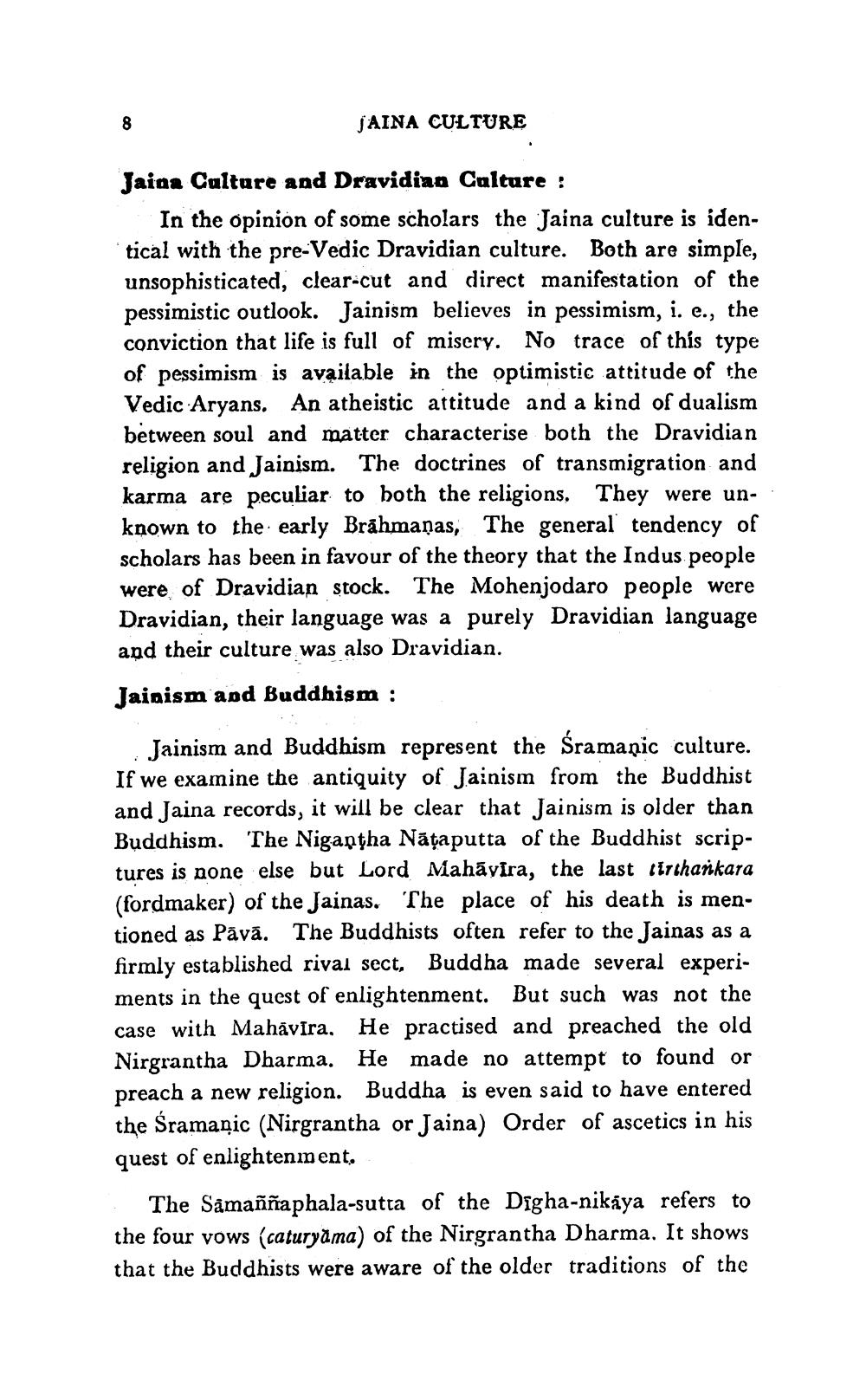________________
JAINA CULTURE
Jaian Culture and Dravidian Culture :
In the opinion of some scholars the Jaina culture is identical with the pre-Vedic Dravidian culture. Both are simple, unsophisticated, clear-cut and direct manifestation of the pessimistic outlook. Jainism believes in pessimism, i. e., the conviction that life is full of misery. No trace of this type of pessimism is available in the optimistic attitude of the Vedic Aryans. An atheistic attitude and a kind of dualism between soul and matter characterise both the Dravidian religion and Jainism. The doctrines of transmigration and karma are peculiar to both the religions. They were unknown to the early Brāhmaṇas, The general tendency of scholars has been in favour of the theory that the Indus people were of Dravidian stock. The Mohenjodaro people were Dravidian, their language was a purely Dravidian language and their culture was also Dravidian. Jainism and Buddhism :
Jainism and Buddhism represent the śramanic culture. If we examine the antiquity of Jainism from the Buddhist and Jaina records, it will be clear that Jainism is older than Bụddhism. The Nigantha Nātaputta of the Buddhist scriptures is none else but Lord Mahāvīra, the last tirthankara (fordmaker) of the Jainas. The place of his death is mentioned as Pāvā. The Buddhists often refer to the Jainas as a firmly established rival sect, Buddha made several experiments in the quest of enlightenment. But such was not the case with Mahāvīra. He practised and preached the old Nirgrantha Dharma. He made no attempt to found or preach a new religion. Buddha is even said to have entered the Sramanic (Nirgrantha or Jaina) Order of ascetics in his quest of enlightenment.
The Sâmaññaphala-sutta of the Digha-nikaya refers to the four vows (caturyama) of the Nirgrantha Dharma. It shows that the Buddhists were aware of the older traditions of the




